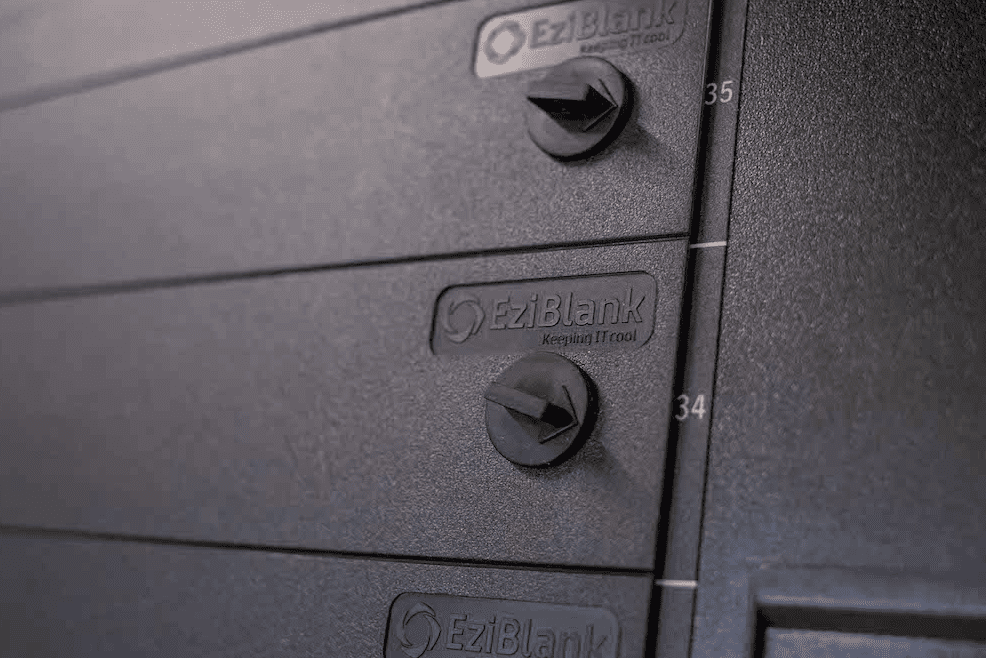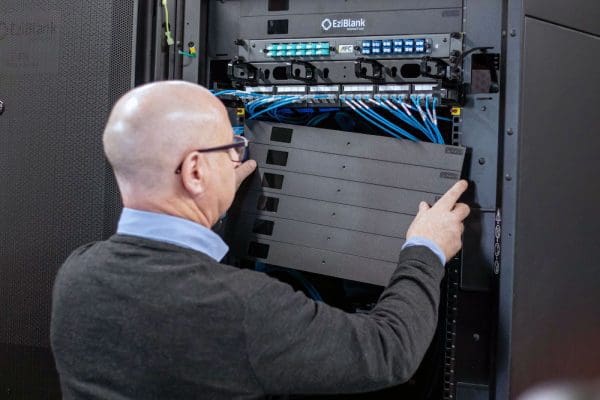In the intricate ecosystem of data centers, every component plays a pivotal role in ensuring operational efficiency and reliability. Among these, server blanking panels may seem inconspicuous but are paramount in optimizing the data center cooling process and, consequently, in enhancing the overall performance and lifespan of the servers. As data centers evolve to meet the increasing demand for digital storage and services, the importance of maintaining an ideal server room environment cannot be overstated. Server blanking panels, also known simply as blanking panels, serve as an essential tool in eliminating hotspots and improving airflow, thereby contributing to the energy efficiency and operational cost reduction of data centers.
What Are Server Blanking Panels?
Server blanking panels, also known as filler panels, are essential components in managing server rack environments effectively. They are flat pieces, typically made of metal or plastic, designed to fit into unused rack space in data centers. These panels play a crucial role in optimizing the cooling system by preventing the mixing of hot and cold air, which is pivotal for maintaining the right temperature to protect sensitive equipment.
Function and Utility of Server Blanking Panel
The primary function of blanking panels is to fill empty rack spaces, separating hot and cold air zones within server cabinets. This separation helps maintain an efficient airflow pattern, reducing energy consumption and preventing the overheating of servers. When a new server or hardware is installed, these panels can be easily removed, making them a flexible solution for evolving tech environments.
Server Blanking Panel Materials
Blanking panels are commonly available in two materials:
- Metal Server Blanking Panels: Often made from aluminum or steel, metal blanking panels are durable and provide a tamper-resistant solution. They are typically fastened with screws, ensuring a secure fit.
- Plastic Server Blanking Panels: These are cost-effective, lightweight and can be installed without tools, simply snapping into place.
Both types of panels are available in various sizes, such as 1U, 2U, and 4U, to match the height of the rack spaces they are designed to fill.
Advantages of Using Server Blanking Panel
The use of blanking panels brings several benefits:
- Improved Airflow Efficiency: By blocking open rack spaces, these panels prevent the recirculation of hot air to the front of the rack, which can significantly improve cooling effectiveness and reduce cooling costs.
- Energy Cost Reduction: Efficient airflow means less air needs to be cooled, and less cooling translates to lower energy costs.
- Enhanced System Performance: Consistent temperatures and reduced risk of hotspots contribute to the overall reliability and performance of the data center equipment.
- Aesthetic and Organizational Benefits: Besides functional advantages, blanking panels provide a neat and organized appearance to the server racks, which can be important in environments where aesthetics are considered alongside functionality.
In summary, server blanking panels are not just simple pieces of equipment; they are integral to the strategic management of data center cooling systems. Their role in separating hot and cold air makes them a key player in enhancing the operational efficiency and longevity of critical server equipment. These panels are available in various materials and sizes, offering flexibility and options for customization according to specific data center needs.
Benefits of Installing Server Blanking Panels
Improved Airflow and Ventilation
Server blanking panels play a crucial role in managing airflow within server racks. By filling empty rack spaces, these panels prevent the mixing of hot exhaust air with the cooler air intended for cooling active equipment. This separation aids in maintaining an optimal airflow pattern, which is essential for the efficient operation of data center cooling systems. Improved airflow not only ensures that hot spots are minimized but also enhances the overall ventilation of the system, which is vital for preventing equipment malfunction due to overheating.
Reduction in Energy Costs
One of the significant benefits of installing server blanking panels is the reduction in energy consumption. By optimizing airflow, these panels reduce the need for air conditioning systems to work harder to cool hot air, thereby decreasing overall energy costs. Studies and implementations have shown that proper airflow management can lead to substantial savings, with some data centers reporting up to a 25% reduction in fan energy use when using containment systems alongside blanking panels. This not only contributes to lower operational costs but also supports sustainability initiatives by reducing the carbon footprint of data centers.
Protection of Data Equipment
Server blanking panels contribute significantly to the protection of sensitive data equipment from various environmental threats. By maintaining a consistent and controlled airflow, these panels help in keeping the temperature within safe operational limits, thus reducing the risk of equipment failure. Additionally, the prevention of dust accumulation is another critical factor. Data centers are prone to dust particles that can cause damage to sensitive components if not properly managed. Blanking panels help seal off open spaces where dust might settle, ensuring cleaner conditions and longer equipment lifespan.
In conclusion, the strategic installation of server blanking panels enhances data center operations by improving airflow and ventilation, reducing energy costs, and protecting valuable data equipment from environmental hazards. These benefits underscore the importance of incorporating blanking panels into server rack designs for maintaining high efficiency and reliability in data center environments.
Common Issues Without Server Blanking Panel
Tornado Effect
When server racks are left with open spaces, they are susceptible to what is termed the “Tornado Effect.” This phenomenon occurs when air blows into an opening between two pieces of equipment on the rack and begins to spin in place, unable to escape efficiently. This trapped air can accumulate unwanted warmth, leading to overheating of the server rack. The spinning air disrupts the intended flow of cooling effects, significantly reducing the cooling efficiency within the data center.
Dead Spots
The absence of server blanking panel can lead to the formation of “dead spots” in server racks. These are areas where the airflow is either non-existent or moves very slowly, resulting in uneven cooling. This stagnation can cause hotspots that may not only impair the performance of the equipment but also lead to potential failures. Dead spots are particularly problematic as they create zones where the temperature is significantly higher than the rest of the rack, risking damage to sensitive components.
Air Pulled from Wrong Direction
Open spaces in server racks can cause air to be pulled from unintended directions, mixing hot and cold air streams. This mixing diminishes the effectiveness of the cooling systems. When cool air intended to cool the servers mixes with hot air expelled at the rear, it decreases the overall cooling capacity. Properly installed blanking panels ensure that air flows only in the desired direction—cool air in and warm air out—maintaining an efficient cooling cycle.
Inefficient Power Usage
Not using server blanking panels can lead to inefficient power usage. Without these server blanking panels, the data center’s cooling systems often work harder than necessary to manage the heat load. This is because the mixed air requires more energy to cool, leading to higher operational costs and increased energy consumption. Server blanking panels help streamline airflow, allowing cooling systems to operate more efficiently and reducing the overall energy expenditure required to maintain optimal temperatures in the server environment.
By addressing these common issues with the strategic installation of server blanking panels, data centers can enhance their operational efficiency, reduce energy costs, and extend the lifespan of their critical equipment.
Why Get Server Blanking Panels?
Through the comprehensive exploration of server blanking panels, it becomes evident that their role extends far beyond filling empty spaces in server racks. These panels are vital in maintaining optimal airflow and temperature regulation within data centers, proving to be crucial for energy efficiency, the protection of sensitive equipment, and overall system performance. The discussed benefits, including significant reductions in energy costs and the enhancement of equipment reliability, underscore the importance of integrating blanking panels into server rack configurations.
The choice between metal and plastic panels allows data centers to tailor their setups based on specific needs, budgets, and security considerations, highlighting the versatility and essential nature of these components. As data centers continue to evolve with the growing demand for digital services, the strategic implementation of server blanking panels stands as a key practice for ensuring sustainable and efficient operations. Moving forward, recognizing the critical contribution of these panels to data center efficiency will remain a priority for optimizing performance and minimizing environmental impact.



